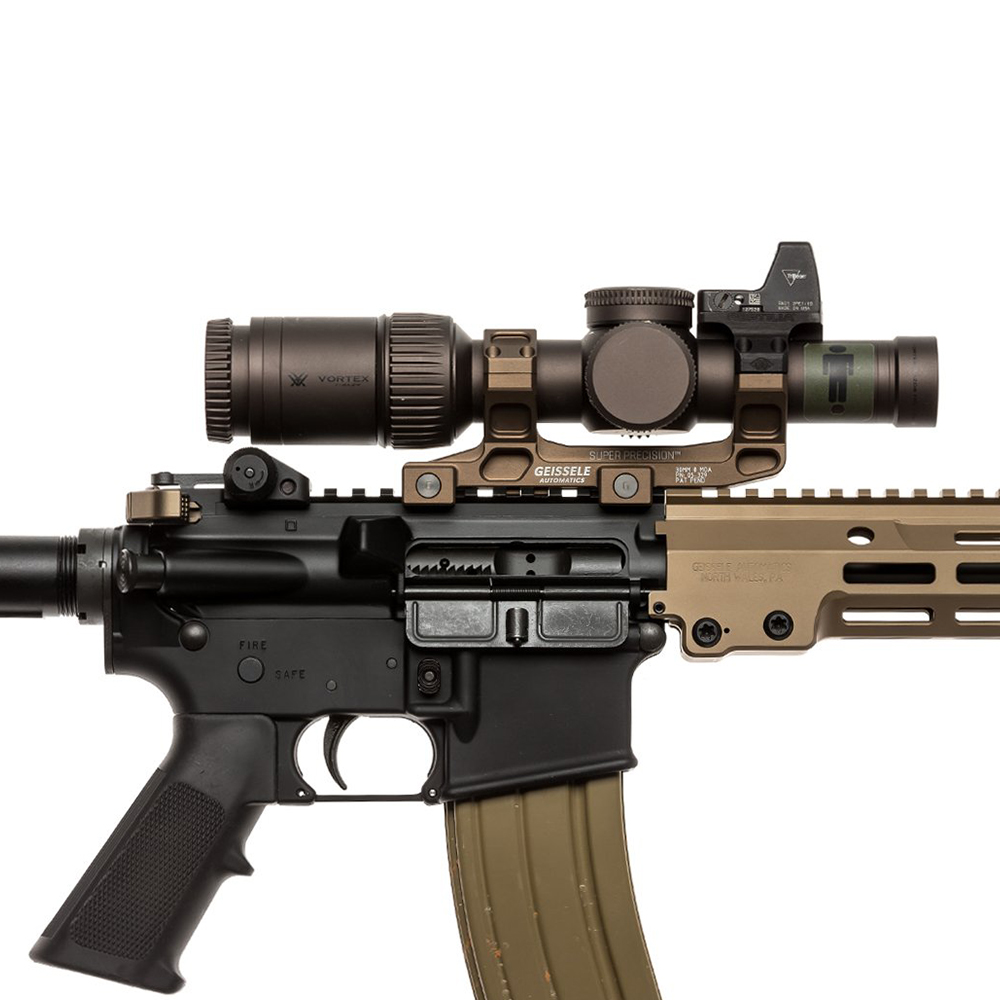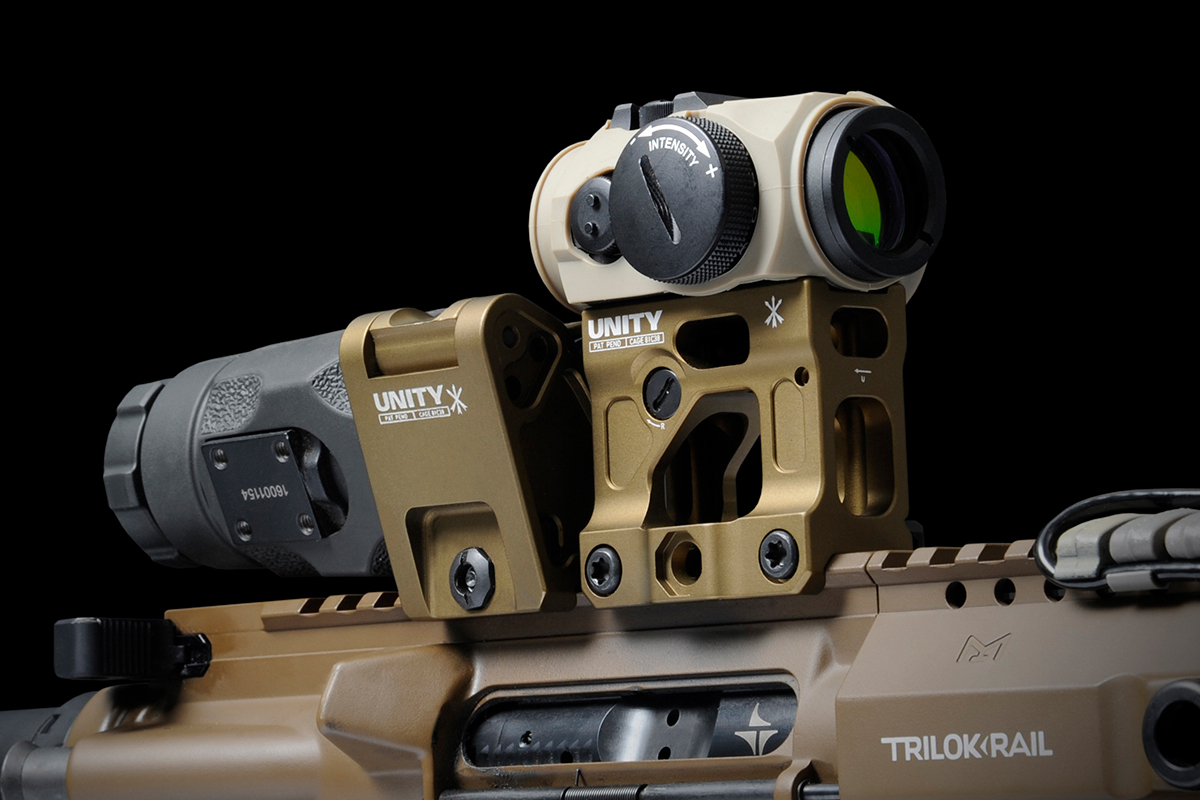Everyone is trying to have BOTH a fantastic and flat 1x while also maintaining image quality and resolution at 8-10x, perhaps the most difficult design achievement. The main reason variable power scopes have low end at all is for better FOV, less finicky eye box for difficult positions, when dealing with movers, scanning for targets, low light conditions, etc.
So if we assume a red dot is the ultimate 1x capability, as it's both eyes open giving maximum FOV, and has very little parallax concern, then:
Why don't mfg take a 4-20 (only a 5x erector) and flip it over in the mount. Make the elevation turret as low profile as humanly possible so it doesn't interfere with the mount itself and add set screws every 20* so the elevation turret can be locked from rotating (think similar function to a capped turret) but allow access from the sides and rotated for zeroing purposes. Once zeroed tighten down the set screws that are available. Take the formerly bottom, now top, perfectly flat area of the erector housing that's milled square and mill into it to accept Glock MOS plates so you can run any RDS you desire and you achieve some futureproofing and customer ability to choose an RDS of their preference.
Now the RDS is not 4" above the bore, but instead only barely above the scope tube itself, without an elevation turret to contend with at all for visual clearance. You don't have to float your chin or have a "beard weld" when using a 12 o'clock mount for passive aiming or 1x capability.
An MK5 3.6-18 is 26oz for reference. A Razor 1-10 is 21.5oz for reference.
So if we assume a red dot is the ultimate 1x capability, as it's both eyes open giving maximum FOV, and has very little parallax concern, then:
Why don't mfg take a 4-20 (only a 5x erector) and flip it over in the mount. Make the elevation turret as low profile as humanly possible so it doesn't interfere with the mount itself and add set screws every 20* so the elevation turret can be locked from rotating (think similar function to a capped turret) but allow access from the sides and rotated for zeroing purposes. Once zeroed tighten down the set screws that are available. Take the formerly bottom, now top, perfectly flat area of the erector housing that's milled square and mill into it to accept Glock MOS plates so you can run any RDS you desire and you achieve some futureproofing and customer ability to choose an RDS of their preference.
Now the RDS is not 4" above the bore, but instead only barely above the scope tube itself, without an elevation turret to contend with at all for visual clearance. You don't have to float your chin or have a "beard weld" when using a 12 o'clock mount for passive aiming or 1x capability.
An MK5 3.6-18 is 26oz for reference. A Razor 1-10 is 21.5oz for reference.
Last edited:


